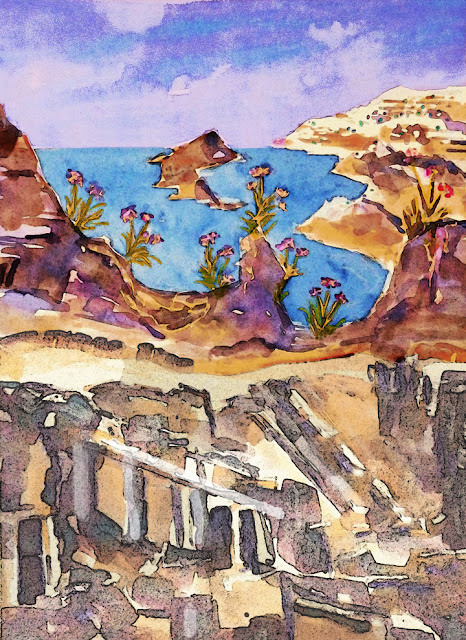Cover
Illustration for Inventing the Future with Haiku: Whistler P2P
computer painting
©2016
Charlene Brown
Because Artificial Intelligence (AI) has
the ability to process ‘big data’ it can be applied to huge problems
involving complex systems. However,
in order to be reliable in forecasting the future, it needs to incorporate the
intuitive aspect of human intelligence.
We need to find ways to build common sense into
artificial intelligence.
It is possible that properly coded algorithms
might eventually enable a computer to execute heuristic processes, but it is more likely that heuristic processes can
serve as a good first step in data analytics by synthesizing data into a form
AI can handle.
Glean as
much as you can intuitively before you start quantifying and fitting
number-crunching formulas.
I figured
this out almost fifty years ago while studying what is now called business
analytics. It was called management
science when I got my MBA, and operations research before that. There was probably a lot less data to mine in
the early `70s, but it seemed like a lot at the time.
1.
The Delphi Technique is a method of
arriving at a group opinion or decision by surveying a group of experts
(usually in diverse fields) who respond anonymously, then have an opportunity
to reassess their answers after seeing the aggregated response. It is
especially useful when there is no true or knowable answer, such as in policy
decision-making, or long-range forecasting.
·
There are apps that make political
forecasts by using AI to comb through Twitter – sort of like a really big
Delphi study without having Delphi participants’ opportunity to reevaluate
their input.
·
The
World Economic Forum Global Risks Analysis, “Visualized: A Global Risk Assessment of 2021and Beyond” describes a rigorous method of quantifying expert opinion that sounds similar
to a Delphi study, except input is not anonymous. See box below.
2. Debating
at a Policy Workshop: Policy
resolutions were raised at the Liberal National Convention, held April 8 – 10
on Zoom. Resolutions had originated with various Commissions and Provincial
branches, and were presented and workshopped on the second day. Several dozen
were put forward for debate and voting on the final day.
There
were over 6000 of us attending the convention (virtually) and, for each
resolution put forward, everyone had a chance to request debate (four debaters
were selected and debates were conducted only if there were at least 50
requests – a necessarily arbitrary process) and then vote on whether or not to
advance the resolution to the Election Platform Committee. That Committee
finalized the Liberal Platform for the September 20 Canadian General Election.
3.
Visualization: Data visualization, which can distill large data sets into
visual graphics, can make it easier to understand complex relationships. However, as determined in Visualizing Unforeseen Results, visualizations are seldom 'stand alone' documents. Annotated visualizations may provide more
easily understood explanations than detailed text-only analytics.
4.
Ideation Sessions: By employing ‘design thinking’ which considers
input from experts in different fields – marketing, design and engineering – working together, disruptive innovation ideation sessions can enrich discussions. These sessions help participants to imagine
'what if?’ disruptions such as black swans, wild cards and events such as
tipping points occur.
o
Black swan events:
unpredictable, massive impact, highly improbable, – eg. 9/11, collapse of the
Soviet Union, Covid-19
o Wild cards: imaginable, low
probability, high impact The difference between Black Swans and Wild
Cards is that Wild Cards are imaginable because they have precedents (ie
predictable to a certain extent – temperature increases, Halley's Comet, 2008 financial crisis, religious conflicts, financial unicorns – or alicorns).
o
Tipping points: action of a
system which has become unstable – eg. effect on crop yields of temperature
increases.
Conclusion: Synthesizing information through soliciting wide opinion, debate,
visualization, pattern recognition, trend analysis and extrapolation, in other
words, going as far as you can in parsing the problem intuitively
(heuristically), increases the likelihood of formulating a solvable
optimization – and increases the chance the answer will actually make sense.








































